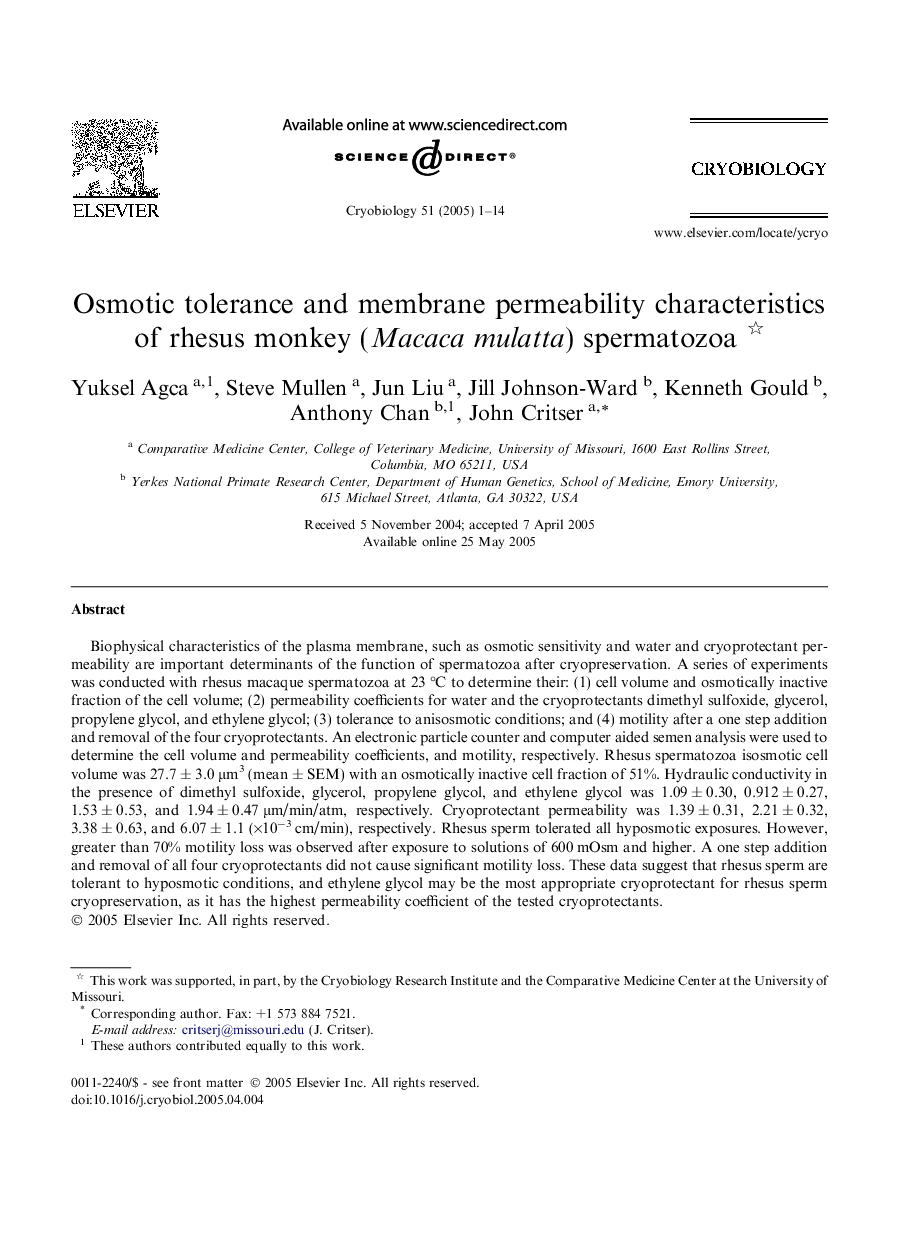| Article ID | Journal | Published Year | Pages | File Type |
|---|---|---|---|---|
| 10928608 | Cryobiology | 2005 | 14 Pages |
Abstract
Biophysical characteristics of the plasma membrane, such as osmotic sensitivity and water and cryoprotectant permeability are important determinants of the function of spermatozoa after cryopreservation. A series of experiments was conducted with rhesus macaque spermatozoa at 23 °C to determine their: (1) cell volume and osmotically inactive fraction of the cell volume; (2) permeability coefficients for water and the cryoprotectants dimethyl sulfoxide, glycerol, propylene glycol, and ethylene glycol; (3) tolerance to anisosmotic conditions; and (4) motility after a one step addition and removal of the four cryoprotectants. An electronic particle counter and computer aided semen analysis were used to determine the cell volume and permeability coefficients, and motility, respectively. Rhesus spermatozoa isosmotic cell volume was 27.7 ± 3.0 μm3 (mean ± SEM) with an osmotically inactive cell fraction of 51%. Hydraulic conductivity in the presence of dimethyl sulfoxide, glycerol, propylene glycol, and ethylene glycol was 1.09 ± 0.30, 0.912 ± 0.27, 1.53 ± 0.53, and 1.94 ± 0.47 μm/min/atm, respectively. Cryoprotectant permeability was 1.39 ± 0.31, 2.21 ± 0.32, 3.38 ± 0.63, and 6.07 ± 1.1 (Ã10â3 cm/min), respectively. Rhesus sperm tolerated all hyposmotic exposures. However, greater than 70% motility loss was observed after exposure to solutions of 600 mOsm and higher. A one step addition and removal of all four cryoprotectants did not cause significant motility loss. These data suggest that rhesus sperm are tolerant to hyposmotic conditions, and ethylene glycol may be the most appropriate cryoprotectant for rhesus sperm cryopreservation, as it has the highest permeability coefficient of the tested cryoprotectants.
Related Topics
Life Sciences
Agricultural and Biological Sciences
Agricultural and Biological Sciences (General)
Authors
Yuksel Agca, Steve Mullen, Jun Liu, Jill Johnson-Ward, Kenneth Gould, Anthony Chan, John Critser,
